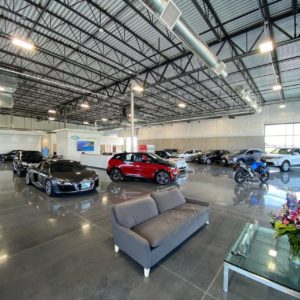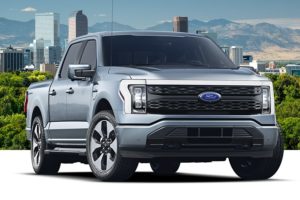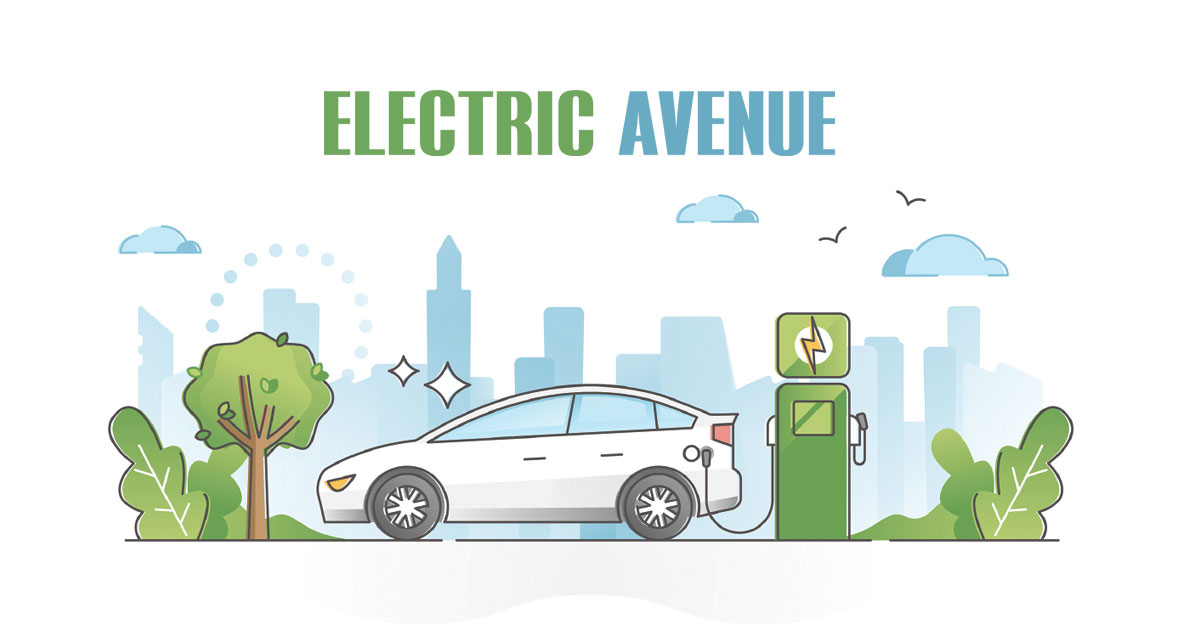After years of stalling, officials hope electric cars can soon fill up Colorado roads

Luke Walch’s first sale as a used car dealer was one of his easiest. He had two cars to sell. The test driver of the Honda CRV quizzed him hard about the air conditioning vents, even though it was winter, and as he was looking them over, he drove straight into a snowbank. “Well, I guess we bought it now,” his wife, in the backseat, said. “I remember thinking, ‘Thank God, because I don’t have the money to pay for it,’” Walch said in an interview. There were times since that start in 2011 when Walch wished for more snowbanks. He was perhaps the first to offer almost exclusively “green” cars as the owner of Green Eyed Motors in Boulder. He offered alternative fuel cars, hybrids and even the occasional electric car. Walch wanted to make a difference, but he also saw a niche, and niches are important for business owners. Back then, however, electric cars were still viewed as something from “The Jetsons.”
Walch survived by shipping cars overseas—even today, the inter-national market is huge, as gas is $7 a gallon in Europe, he says—and a breakthrough of sorts in the U.S. came after Colorado established a tax credit in the mid-2010s. When the credit was dropped, sales dropped too but not as much as Walch expected. People figured out electric cars could exist outside of cartoons with flying cars. Now business is much better. He just moved to a roomy spot in Frederick, and electric cars are still uncommon, but they are within reach of those with modest incomes (depending on who you talk to). Walch can sell you a used electric car for $10,000. And as major car companies begin to mass produce electric vehicles—probably the biggest recent announcement was Ford going all-in with a brand new, 2022 electric model of its best-selling F-150 truck—Walch sees a real, immediate future in electric vehicles. Audi announced it was discontinuing vehicles with gas-powered engines. GM announced it will do the same by 2035. Tesla remains viable in the luxury market.
There are more Leafs, Priuses and Insights than ever. Concerns about the climate and the Biden administration’s push to address it have also helped. There are still many obstacles to meeting the state’s goal of nearly a million electric cars on the roads by 2030. There are still many common misconceptions about electric car technology, the price and the availability of chargers. And buyers don’t necessarily want to do the research and planning it takes to go on a long car trip with them.Some Northern Colorado cities are still admittedly slow to invest in electric car chargers, including Loveland and Greeley, something Biden’s infrastructure plan hopes to change with $7.5 billion earmarked for 500,000 new chargers nationwide. Used gas cars are still cheaper, at least up front, and the demand for used electric cars is much higher (and that’s all Walch can sell, as he doesn’t have a franchise for new cars).“It’s not as easy as it used to be to find them,” says Walch, who still competes against exporters. “Buying them at a price I make a profit at is tough.”
Yes, Walch faces more competition, but he’s excited, as someone who is concerned about the climate, that his niche may soon no longer be a niche. “There’s a lot more products and diversity now,” he says. “Models you didn’t even know were hybrids are hybrids now. Every manufacturer has a plug-in of some sort. It’s pretty cool.
“I used to bid on electric or hybridcars unopposed at these auctions. The announcer would literally be making fun of them. But now everyone wants them.”
Heavy metal
Sheble McConnellogue learned to ignore all the strange looks she got on the job. As founder and executive director, she turned the Northern Colorado chapter of Clean Cities into a nonprofit in 1996. Her main goal was to decrease our dependence on foreign oil, a popular stance back then, but she was also trying to avoid the air quality problems that Colorado faces now. She used a variety of tactics, including promoting mass transit and carpooling and alternative fuels, such as corn into ethanol. But she also pushed electric vehicles. “People thought I was crazy,” McConnellogue says.
There was more optimism back when the Denver Electric Vehicle Council formed in 1974 after the first gas shortage in 1973. Back then, people welcomed the idea of not waiting in long lines for fuel and viewed the vehicles as the future. People back then also probably thought we’d have jet packs by now.
But then progress didn’t seem to change much. “In the late 80s and early 90s, our thought was we should be going places in a few years rather than a few decades,” says David McNeil, secretary and treasurer of the council. “But one of the things holding that progress back was technology. The batteries back then were really heavy and you couldn’t charge them as much as now. That technology has made it much easier to do today.”
Some of what McConnellogue considers her greatest accomplishments involve electric vehicles, including a partnership with Rocky Mountain National Park. She thinks there’s been a lot of progress, but she would like to see more of the free market take command rather than the model of relying on government funding to make electric cars viable.
“The thing with electric vehicles is we were always subsidized,” she says. “That’s how it survived. I’m not sure that’s the best route to continue. I think we’ve gotten further than I ever imagined we would, but then again, it’s a lot of funding and grants from the Department of Energy.”
New technology, same old misconceptions
Diego Lopez, who took over for McConnellogue when she retired a few years ago, says his job is much easier now. Models are more available and made by mainstream car makers, as well as the luxury Tesla brand. They’re also more viable too. In the last five years, major improvements in battery technology have doubled the miles you can travel on a single charge in most electric vehicles. They’re no longer the unwieldy behemoths McNeil described. He still faces tough questions, however, and they’re broader now.
luxury Tesla brand. They’re also more viable too. In the last five years, major improvements in battery technology have doubled the miles you can travel on a single charge in most electric vehicles. They’re no longer the unwieldy behemoths McNeil described. He still faces tough questions, however, and they’re broader now.
Some wonder why owners of electric vehicles essentially get a free ride on road construction and maintenance since those improvements are typically funded partially through taxes on gasoline. Lopez and McConnellogue acknowledge that needs to change, perhaps by putting a tax on carbons released into the air, something being discussed in Washington and pushed by Colorado Sen. John Hickenlooper. Others in rural areas wonder why they’re paying taxes to subsidize programs that benefit electric cars when those types of vehicles would be used by urban residents much more than rural ones: Urban residents have greater access to electric cars and chargers and tend to take shorter trips. This question is one reason McConnellogue doesn’t want subsidies to dominate the electric car market, as she wants to see equal access to electric vehicles.
These are good points, and Lopez enjoys discussing both the pros and cons of electric vehicles, since if you ignore them, people think you’re a salesman instead of an advocate. But Lopez also tends to battle some of the same misconceptions McConnellogue faced. He hesitates to talk about technology such as battery upgrades because residents then assume car prices are still as high as a Tesla. “When you promote this, you promote all these new features, and people assume the cost will increase,” Lopez says.
Residents also assume electric cars are still a brand-new technology, Lopez says, and therefore all the bugs haven’t been worked out. This last point especially irks Walch because banks and insurance companies still avoid electric vehicles because of the “new technology” label. “Hybrid technologies have been around 20 years,” Walch says. “It’s not new at all. It’s proven and long-lasting.”
It’s true that the upfront costs make it challenging for some drivers to afford one, but that’s also true of many new gas cars, Lopez and Walch says, and the prices really are going down as battery technology improves. Plus, the fuel costs—gas is now close to $4 a gallon—and the maintenance on gas engines makes it easy for electric car owners to recoup their up-front expenses.
“When you factor in ownership,the overall cost is really low,” Walch says. Even so, electric vehicles do tend to cost more, McNeil says, and his assertions are backed up by Marcie Willard, marketing coordinator with Lightning eMotors of Loveland, which manufacturers heavy-duty and medium electric fleets such as shuttle buses, passenger vans and buses. Lightning does not make personal vehicles. Willard also says lower prices, incentives and more chargers will help increase electrification. “The biggest challenge we see across all EV segments is that EVs are simply more expensive,” Willard says. “High-quality lithium-ion batteries will always be more expensive than an aluminum gas tank. However, battery prices are coming down and the efficiencies are going up again across all segments.”
Once the prices come down to all levels, McNeil says, you may see a surge in electric car purchases because they tend to outperform gas engines. A survey done by a California college asked purchasers why they bought an electric vehicle, and tax incentives wasn’t one of the reasons. “It was the quiet, low maintenance and performance,” McNeil says. “The environment as well. That remains a problem. You have environmentally minded people, but they don’t have the wherewithal to buy new cars.”
Just a matter of time
Climate change is already a part of Colorado, according to a report from the Colorado Energy office, as the state hasn’t had a year with below-average temperatures since 1993. Last year was the worst, by far, for forest fires, and there is the potential for a 50 percent reduction in water through the Colorado River by the end of this century. Ozone is worse than it’s ever been, even on the rare days when smoke isn’t in our air in the summer. Transportation emissions are the largest source of greenhouse gases, and Gov. Polis’ administration is targeting them to help solve our climate and air quality issues. One of the state’s goals is to have 940,000 electric vehicles used by residents by 2030. This alone gives Willard and others in the industry hope. “It will happen,” she says. ‘It’s just a matter of time.” But now there are 6 million passenger vehicles in the state. Of those, nearly 40,000 are electric. The chances of Colorado meeting its climate goals are nearly impossible without cutting transportation emissions.
“It’s really important that the public buys electric vehicles,” says Christian Williss, senior director of transportation fuels and technology at the Colorado Energy Office. “The emissions from the passenger vehicle sector are significant.”
The goals are part of the Greenhouse Gas Pollution Reduction Roadmap, the most ambitious process the state has ever undertaken on the climate. The goal is to reduce the state’s greenhouse gas pollution 26 percent by 2025 and 90 percent by 2050 from 2005 levels. By 2050, nearly 100 percent of all cars on the road will need to be electric to meet that goal, the report says. There are a variety of ways for the state to make that happen, and it will use dozens of ideas and work with local governments to see it through. But they can’t force the public to buy electric vehicles. They have to be appealing, and the state found obstacles in surveys with residents. Residents mentioned cost again as well as a continued lack of awareness on charging stations, including how they work and where they are located, and concerns that Williss calls “range anxiety” (i.e. running out of juice with no way to charge them back up).
The public also wants to be able to pick their favorite models rather than settle for a small car, but the market is addressing that, as Ford’s commitment to the electric F-150 shows. “We are even seeing a crossover to the sport-utility market,” says Matt Mines, program manager who helps oversee all the electric vehicle initiatives for the state energy office. “That’s a significant piece of the market. Coloradans have a huge love with their SUVs.” The variety of models should increase even more now that Colorado has established an actual numerical goal of electric vehicles on the road. Electric vehicle manufacturers tend to favor those states, Williss says, shipping their newest models to them first, even those not widely available. The state hopes to address these concerns in a marketing campaign next year.
What is a city’s role? The state works closely with cities, including those in Northern Colorado, to create a common vision and help them set measurable goals. Most cities are willing and ready to do this, Williss says, with widespread recognition that something needs to be done. “In many ways they’ve come to us,” Williss says. Sometimes it’s easy, as with Fort Collins, which ranked first in the 2020 North American Green Fleet Award for its extensive purchases of electric vehicles for its own fleet.
The city also has an extensive roadmap, much like the state, that it established in 2018. The plan includes ways for residents to learn more about electric vehicles. The city also replaced its charging stations to dual-port, meaning two cars can use them at once, and installed them in common areas such as the downtown civic center parking garage, Mulberry Pool, the senior center, the transit center and EPIC. The city charges drivers $1 an hour to use them. It also helps sponsor a group buy program, along with Clean Cities and the City of Loveland, that resulted in the discounted sale of 87 electric vehicles across four dealerships. But not all cities buy into it the way Fort Collins does. Greeley, for example, isn’t against electric vehicles but doesn’t know how much to put into the cause and won’t spend money just yet, although it may begin to purchase more electric vehicles for their fleet, including the F-150s, that would meet the city’s requirements for vehicles that can handle a lot of hard work. Greeley’s rebuilding of its transportation master plan may address electric vehicles, says Will Jones, public works deputy director. The master plan will include input from residents and the council.
“That will potentially appear in that and give us guidance soon on how we move forward,” Jones says. “We’ve had some requests from the public for charging stations, but nothing substantial, but I do think that will increase as time goes on.”
Loveland thinks so, too, and has already installed several chargers at the city parking garage and other city facilities. Loveland also wants to allow the market to decide what will happen with electric vehicles.
“We are ready to meet that demand where that’s feasible,” says Nicole Yost, spokeswoman for the City of Loveland. The city does not spend money out of its budget to provide electric chargers, but it has received several grants to do so and will continue to pursue those for more. Loveland also charges for their use, which gives the city a sense of how often they are being used. They get quite a bit of use, Yost says. “We are actively investigating current and future funding opportunities to help make charging infrastructure easier and more efficient,” she says. There are more practical reasons for cities looking at electric vehicles, says Jodi Lessman, assistant to the public works director for Loveland: Governments can’t rely on one source of energy for too long. “We don’t want to be reliant on fossil fuels,” Lessman says. “We are looking for clean energy, but also if something goes wrong with fossil fuels, we have alternatives.”
The state, however, does not believe local governments will determine whether we all drive electric cars in the next decades. “This shouldn’t be seen as it being on the backs of local government,” Williss says. “They play a vital role, but we have provided grants to private companies far more often.”
Indeed, private businesses see electric chargers as an incentive to attract employees at a time when finding workers is harder than ever. They also see a future when their employees may be expected to ride transit or use electric vehicles. Colorado already attempted to require large businesses to have a certain percentage of its employees getting to work in something other than riding in a gas-powered vehicle by themselves. That policy failed after businesses squawked, but it could come up again.
The state has well over 1,300charging stations, and many of them aren’t on city government properties. This excites the state, as it’s exactly the kind of organic growth they want to encourage to help the industry thrive. Some businesses even see electric chargers as a way to attract customers. The Centerra shopping center installed chargers to encourage car owners to shop, eat and play while they charge. Centerra has several, in fact, in its marketplace as well as its office campus, Railway Flats apartments and in a public parking lot. The state helped provide grants for many of them along with their own money. The chargers attract shoppers and residents of Railway Flats, who have said they rented in part because of them. “McWhinney is continually listening to the market and our customers,” says Kim Perry, vice president of community design and neighborhood development with McWhinney, which developed Centerra.
“We are seeing the demand for sustainable transportation grow, and in many cases commercial infrastructure is not keeping pace with this demand. We view EV chargers as another amenity that contributes to Centerra’s position as a leading destination in Northern Colorado.”







